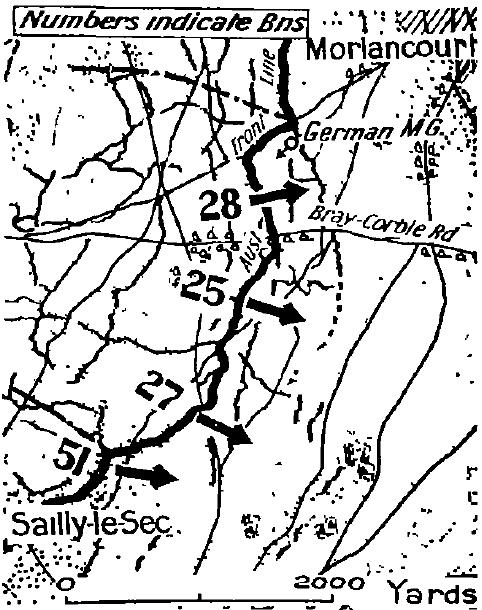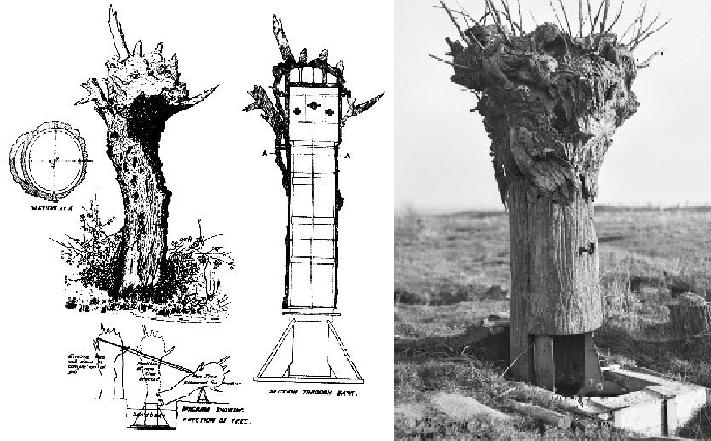Topic: BatzB - Diamond Hill
The Battle of Diamond Hill
South Africa, 11 - 12 June 1900
Outline
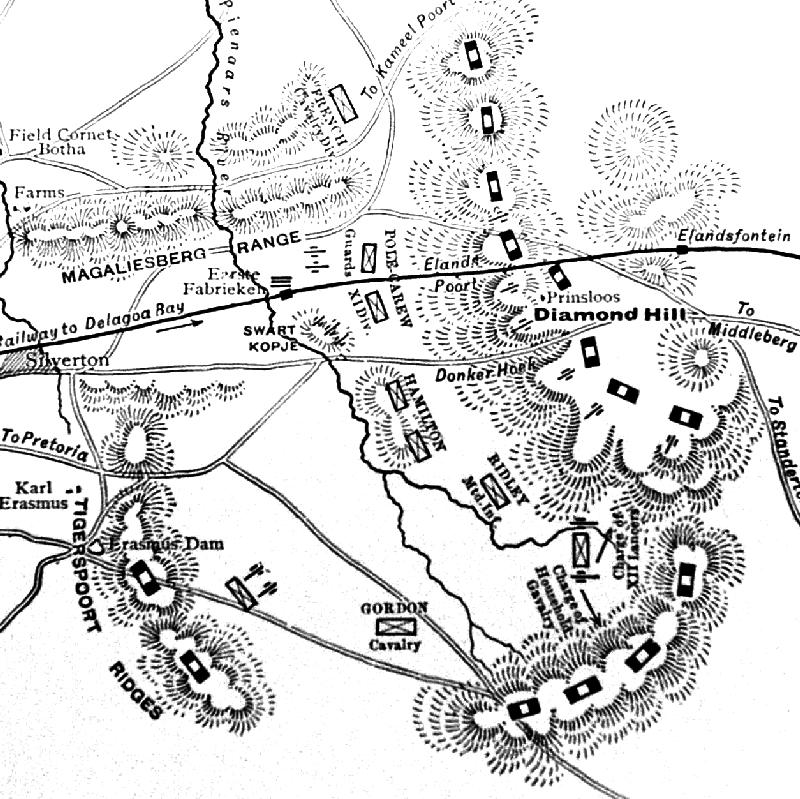
Map detailing the Battle of Diamond Hill
Diamond Hill, an action fought on 11 - 12 June 1900, during the Second South African War, between British forces under the direct command of Field Marshal Lord Roberts and the main Boer army of the Transvaal republic under General Louis Botha. The latter, comprising 6.000 men and 23 guns was menacing the Transvaal capital, Pretoria, which the British had entered with 25,000 men on 5 June, by occupying a 50-kilometre front east of the town. To deal with this threat Roberts moved out on 11 June with 14,000 men and 70 guns - all he could spare from the protection of his lines of communication. His plan called for attacks by Lieut.-General John French's cavalry and mounted infantry in the north and Lieut.-General Sir Ian Hamilton's infantry and mounted infantry in the south, which were intended to tie up both enemy flanks before a main attack was attempted against the centre.
Botha had accurately anticipated Roberts' tactics, and was ready to deal with both flanking movements. French's force comprised only 1,400 horsemen (including ten members of the 1st Australian Horse and 35 of the New South Wales Lancers) and, although supported by a dozen field guns, was easily stopped by General J.H. De la Rey and forced to remain in defensive positions for the night. In the opening moments on this flank, a troop of the New South Wales Lancers which was sent forward on scouting duty was mistaken for Boers and shelled by the British guns, fortunately without any of the Australians being hit. Not so lucky was the New South Wales Ambulance, which was later struck by an enemy shell and damaged while moving about in the front-line.
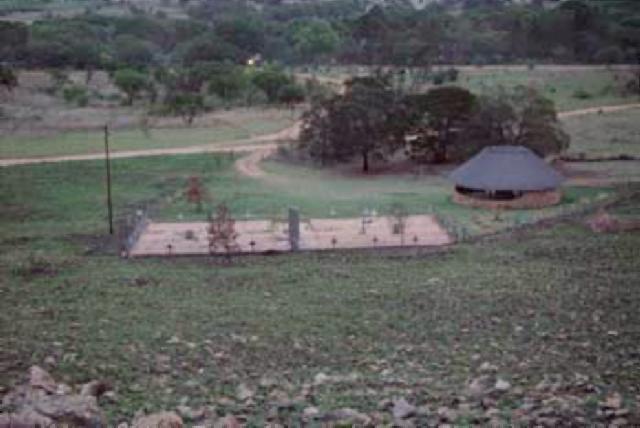
Diamond Hill overlooking the War Cemetery
On the right flank, meanwhile, Hamilton found himself strongly opposed by Boers under General Piet Fourie who occupied a long rocky ridge line dominated by Diamond Hill. In attempting to press ahead in the face of fierce resistance, part of the British force was almost surrounded when night ended the first day's operations. In the face of the situation which now confronted him, Roberts was reluctantly forced to contemplate a costly frontal attack in the centre against enemy positions which had been barely touched. Reports during the night, however, persuaded him to lend his support for a main thrust to be mounted by Hamilton against the Boer strong point at Diamond Hill.
The assault which was finally launched shortly after noon the next day entailed five battalions moving against the western slopes leading onto the Diamond Hill plateau. Although successful, the effort soon became bogged down when the Boers retreated to covering positions and the attackers were exposed to murderous fire from high ground on both flanks. This pressure was only relieved when the brigade under Colonel H. De Lisle, which contained a battalion of British mounted infantry along with both the New South Wales Mounted Rifles and West Australian Mounted Infantry, made an assault onto the Rhenosterfontein kopje on the British right. This position was effectively the eastern extension of the Diamond Hill ridge line, and the source of much of the fire which pinned down the main assault force.
De Lisle, sent to concentrate his efforts against the Rhenosterfontein position during the morning, had used the two pom-pom guns with his force to cover the men of the 6th Mounted Infantry Battalion as they began steadily working their way forward on foot until they were close under the hill. By 2 p.m. De Lisle ordered the Mounted Infantry to advance. As soon as he saw that the leading troops had gained a foothold, he moved his pom-pours up to within 1,300 metres and in the words of The Times history of the war - 'let go the New South Wales Mounted Rifles'.
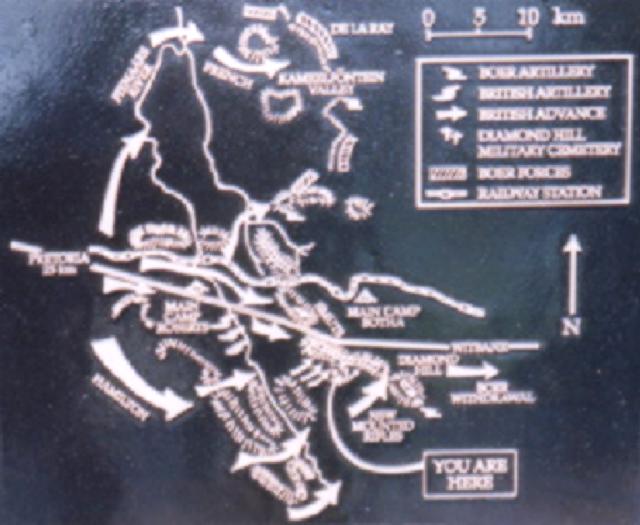
The Australian plaque commemorating the Battle of Diamond Hill.
The four squadrons of the New South Wales regiment, commanded by Lieut.-Colonel G. Knight, came under fire as they galloped in long well-spaced lines across the broad grass-covered valley to where the local farmhouse stood among a grove of gum trees. Leaving their horses in dead ground here, they rushed forward still widely spaced-27 metres between men and 45 metres separating the ranks formed by squadrons. According to The Times account:
Extended in this way the 350 men of the corps created the appearance of a much larger force, and as they swarmed over the crest of the hill with fixed bayonets, the Boers without waiting for the attack retired to a second position some 1,200 yards away.
With darkness now beginning to fall across the hill, the Boers opened up a 'furious fusillade' along the whole line of the position. Botha, however, upon hearing of De Lisle's success, realised that that part of the ridge line which his men still held would be untenable as soon as Hamilton brought up heavy artillery onto the plateau. He accordingly gave orders for his commandos to disperse during the night, the retirement commencing at 11 p.m, and being carried out so quietly that it went undetected until the next morning. Roberts was therefore initially unaware of the victory which his force had obtained, at a cost amounting to less than 200 casualties (including two officers killed and six men wounded among the New South Wales men engaged), Boer losses were probably heavier than the 24 killed and wounded that were admitted but were still minor nonetheless.
The only pursuit of the retreating enemy was carried out on 13 June by a detachment of 150 Australians, mainly men of the West Australian Mounted Rifles under Major Hatherly Moor with come members of "C" Squadron of the New South Wales Mounted Rifles. This force followed the Boers for nearly seventeen kilometres, to near Bronkhorst Spruit station, and fought a brief action with an enemy rearguard in a laager (camp). The role of the Australians during the action at Diamond Hill - the last great defensive battle fought by the Boers - was much praised, and during a review at Elands River on 14 June Knight's men were cheered by British troops for the gallantry they had displayed there.
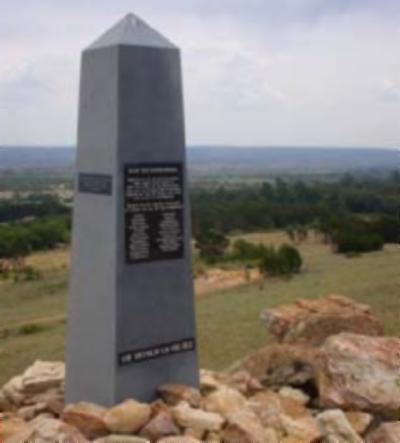
Battle of Diamond Hill War Memorial.
Extracted from the book produced by Chris Coulthard-Clark, Where Australians Fought - The Encyclopaedia of Australia's Battles, Allen and Unwin, Sydney, 1998, p. 78-81.
Additional References cited by Chris Coulthard-Clark:
L.S. Amery, (ed.) The Times History of the War in South Africa 1899-1902, Vol. 4 (1906), London: Sampson Low, Marston & Co.
R.L. Wallace (1976) The Australians at the Boer War, Canberra: Australian War Memorial & Australian Government Publishing Service.
Further Reading:
The Battle of Diamond Hill, South Africa, 11 - 12 June 1900
The Battle of Diamond Hill, South Africa, 11 - 12 June 1900, Roll of Honour
Battles where Australians fought, 1899-1920
Citation: The Battle of Diamond Hill, South Africa, 11 - 12 June 1900, Contents




